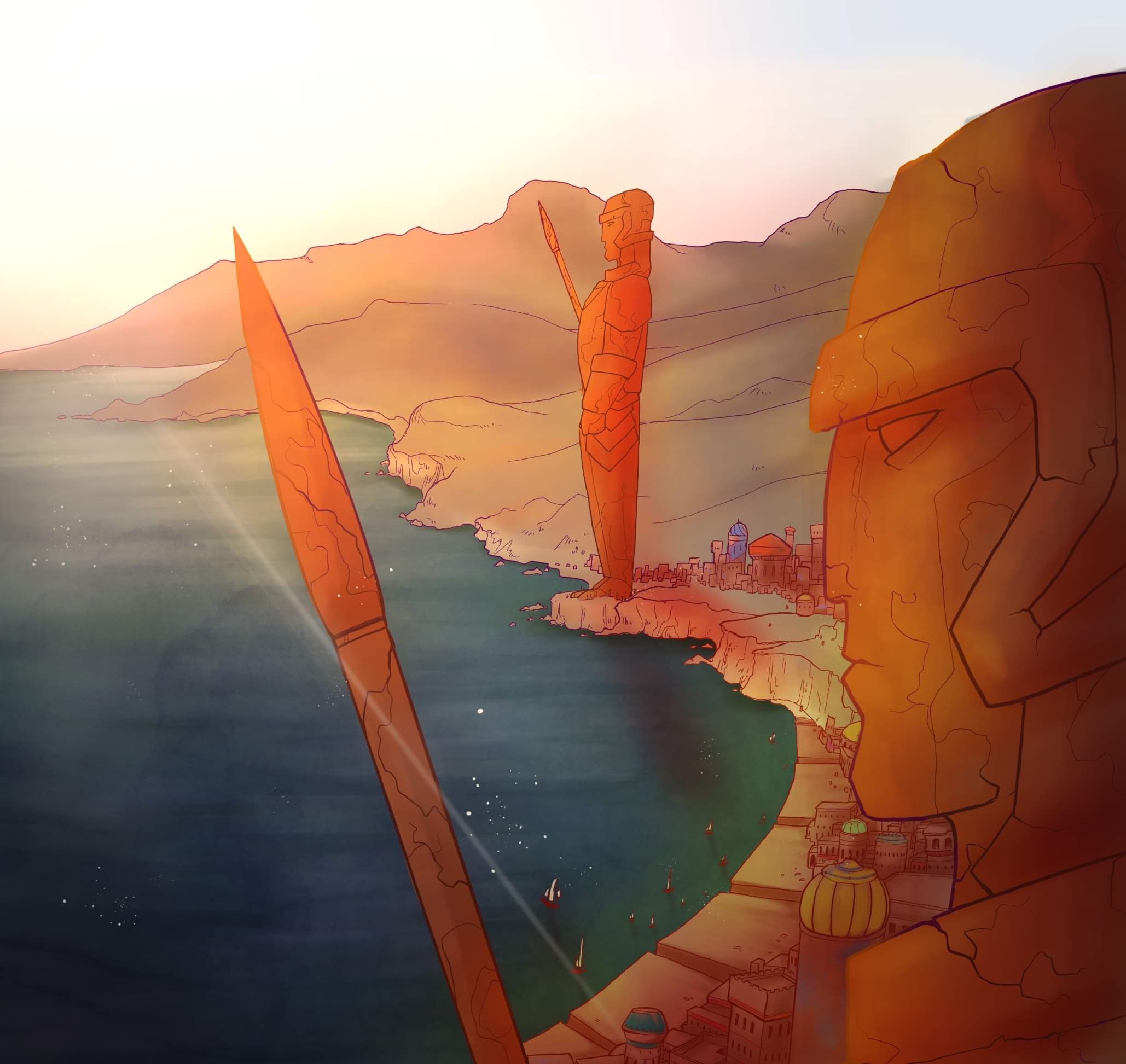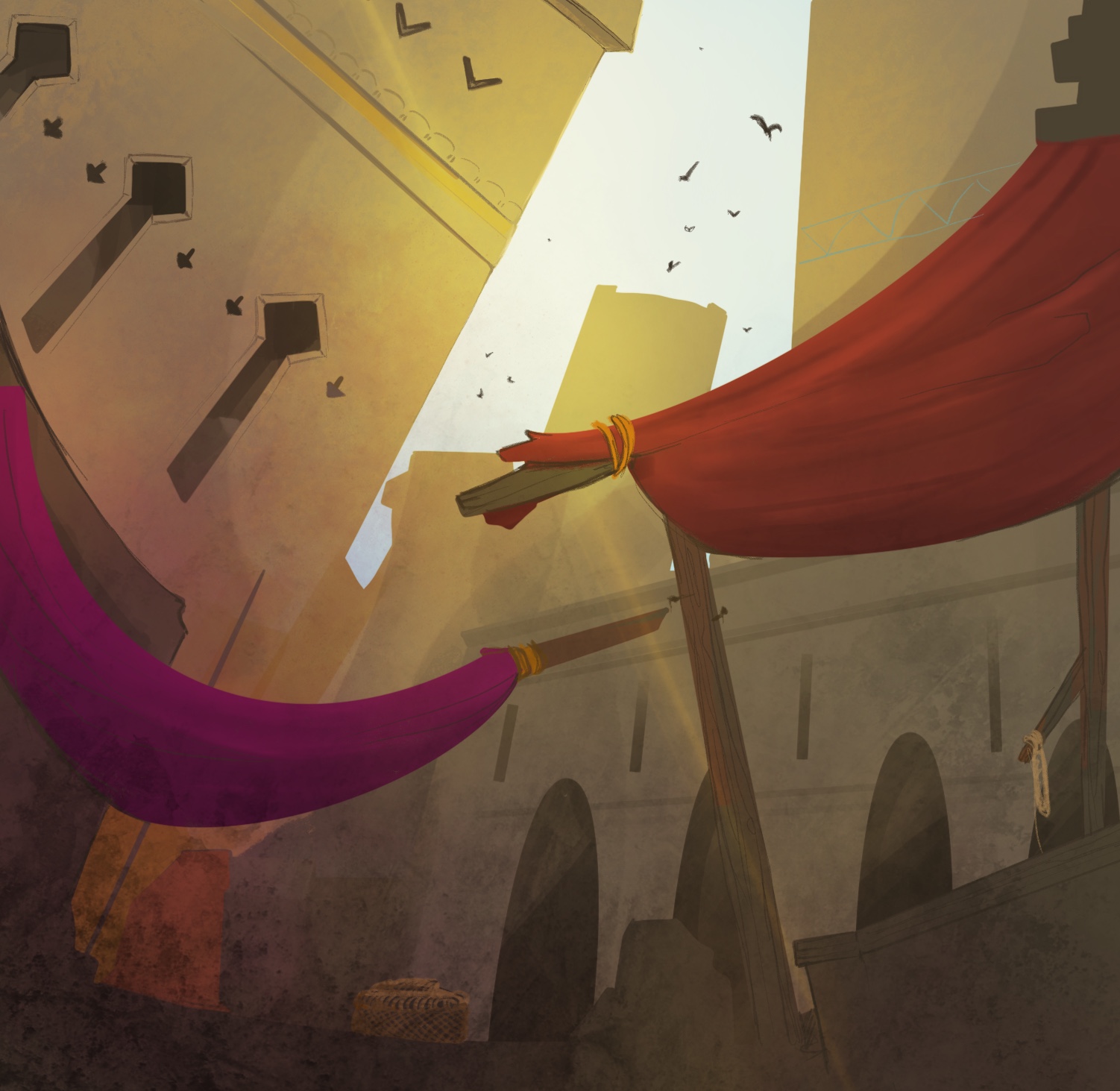The Atrophes of the Oboline
Every time a prisoner of the one of the debtor prisons that populate The Oboline of Arc dies twenty-four teeth, one for each hour of the day, are extracted and placed in one of two hourglasses. The destination of a set of teeth is determined by the position of the sun at death. The teeth of those who die from midnight to midday are placed into an hourglass fixed into the arch marking the eastern border of the quarter, while those who die from midday to midnight are placed in an hourglass fixed into the arch marking the western border of the quarter. The arches that support them are called The Crones. The eastern hourglass is known as Nix , the western as Nox.
Time in the Oboline is measured in the number of times an hourglass needs to be emptied. Each hourglass can hold approximately 12,000 teeth. Therefore each hourglass needs to claim 500 victims before it can be emptied. Two functionaries, one for each hourglass, known officially as the atropes are in charge of maintaining and turning the hourglasses, as well as ensuring the correct number of teeth per death are assigned to their hourglass. They are colloquially referred to by the lower orders of Arc as the nick-nock men, a corruption of Nix and Nox originating from the fact that in many of the cants that proliferate the districts surrounding The Dures Road the pronunciation of an x and a ck is barely distinguishable.
Due to the unclean nature of their work and constant threat of vendettas from the families of the Oboline’s victims the atrophes wear faceless masks lined with human teeth they have emptied from the hourglasses. Each also fashions a cape lined with the wisdom teeth of the dead, which are reserved for this purpose. Any surplus teeth are used to line the walls surrounding the temple at the centre of the Oboline, the Lachesium. They wear ceremonial bronze armor, so highly polished than those who look upon them can see their reflections in it, thought to convey their renunciation of self, one does not see the person beneath the armor that signifies the role, rather the armor reflects an onlooker's image back at them, a memento mori of the social death of wardship, for the road of every ward leads inexorably to the Crones.
The Atrophes’ renunciation of self requires that they are utterly interchangeable with one another, down to being virtually identical in height, build, proportions. They are forbidden to speak while performing their role and communicate through a form of sign language taught to all those overseeing the day to day operations of the Oboline. This is to maintain a sense of continuity between each person who occupies the role, so that over the centuries, to create the illusion that all the deaths of the Oboline have been counted and presided over by a single individual. The citizens of Arc jokingly refer to the atrophes as the Deadbeat Graces, remarking that ‘even the gods are indebted to the The Houses of Coin these days.
The Book of Emond
The Atrophes were named minor deities in one of Apocrypha of the Aruviad, the Book of Emond, mentioned in a single passage concerning the judgement of dead souls:‘ Coiled before the gate lie the serpentine Atrophes, in which all lives are muted. And the huddled pass through each scale in the horror of completion.’Nothing is so horrific to the Aruhvian as the completed life because it is a life beyond atonement, whose impurities must be endured as a never ending affliction. It is written in the Aruhiviad that through the Atrophes, that lie at the Gates of Damnation, that a dead soul sees just how afflicted their life has been, a foretaste of all they will have to endure without relief. Thus the Atrophes of the Book of Emond are, in essence, the first, true, clear image an Aruhvian has of their life, for in those serpents they can see themselves with the clarity of the Graces. The atrophes of the Oboline lie at the threshold of death, adorned with the teeth of the dead instead of scales. The Book of Emond was recovered became an important part of the Arcite Aruhvian corpus, as it dealt extensively with Damnation, charting the life of the Grace Y’Erest, who renounced his divinity living his mortal life as the mortal prophet Emond, and descended into Damnation voluntarily to alleviate the suffering of its denizens. The sacrifice of Emond in the Arcite civic religion is interpreted by the Smiths of Obola as the birth of civic man, the divine grace which allowed humanity to rise above their animal nature and become social beings. In the eyes of the Arc’s Aruhvian Church the denizens of the Oboline are doubly damned as their inability to retain their citizenship, and thus prove that they are capable of living as civic beings, testifies to their animal nature. For how can they achieve unity with divinity if they cannot bring themselves into harmony with their fellow men?




Comments